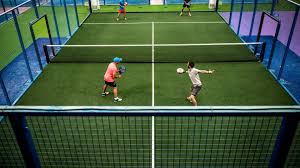

Building Your Own Padel Court What You Need to Know
Padel, a rapidly growing racquet sport that combines elements of tennis and squash, has become increasingly popular worldwide. With its friendly nature, quick learning curve, and social aspects, many enthusiasts are considering building their own padel courts at home. This article will guide you through what to consider when hiring companies to help you build your own padel court.
Understanding Padel Courts
Before diving into the logistics of construction, it's essential to understand the components of a padel court. A standard padel court measures 20m x 10m and is surrounded by walls that are typically 3m high at the ends and 4m high at the sides. The playing surface can be made from artificial grass, concrete, or other materials designed to provide excellent traction and ball response.
Choosing the Right Location
Selecting an appropriate location is the first step in building your padel court. Ideally, the site should have enough space to accommodate the court's dimensions, as well as additional areas for spectators, warming up, or other activities. Ensure the ground is level and well-draining to avoid water pooling, which can damage the court surface over time.
Working with Professional Companies
When it comes to building a padel court, collaborating with a specialized construction company is crucial. Not all construction firms have the experience or knowledge related to sports facilities. Look for companies that specialize in building sports courts or have previous experience with padel installations. Research their portfolios and read client testimonials to gauge their expertise.
Court Construction Process

The construction process typically involves several stages
1. Planning and Design After selecting a contractor, the next step is to finalize the design of your court, including surface type and amenities like lighting or seating. 2. Site Preparation The area will need to be cleared and leveled. Adequate drainage systems may also be installed to manage excess water.
3. Court Construction This phase involves laying the chosen surface material, constructing the walls (either glass or solid), and installing nets and posts.
4. Finishing Touches Once the court is built, add any desired features, such as lighting, landscaping, or fencing.
Maintenance Considerations
After building your padel court, maintaining it is essential to prolong its lifespan. Regular upkeep, like cleaning the surface, checking for wear and tear, and ensuring proper drainage, will help keep the court in top condition. Professional companies often offer maintenance services or guidance on how to care for your court effectively.
Conclusion
Building your own padel court can be a rewarding investment for both personal enjoyment and community engagement. As the popularity of padel continues to rise, having a court at home not only provides a space for recreational play but also enhances your property value. By selecting a specialized construction company and following through with proper maintenance, you can create a fantastic padel experience that will last for years to come.
Whether you're a serious player or just looking to enjoy a fun game with friends and family, owning a padel court can be a game-changer in your sporting journey. Don't hesitate to get started on this exciting venture!
High-Performance Industrial Flooring Solutions China Paddle Tennis Court for Sale
High-Performance Industrial Flooring Solutions Durable & Cost-Effective
Homogeneous Transparent Floor – Durable & Stylish Rubber Floor Solutions
Premium Homogeneous Transparent Floor for Durable & Stylish Spaces Rubber Floor Solutions
Premium Sports Floor Solutions Durable PVC Sports Floor & Rubber Floor for Gyms
Durable Rubber Composite Floor Premium Rubber Floor & Mats Solutions